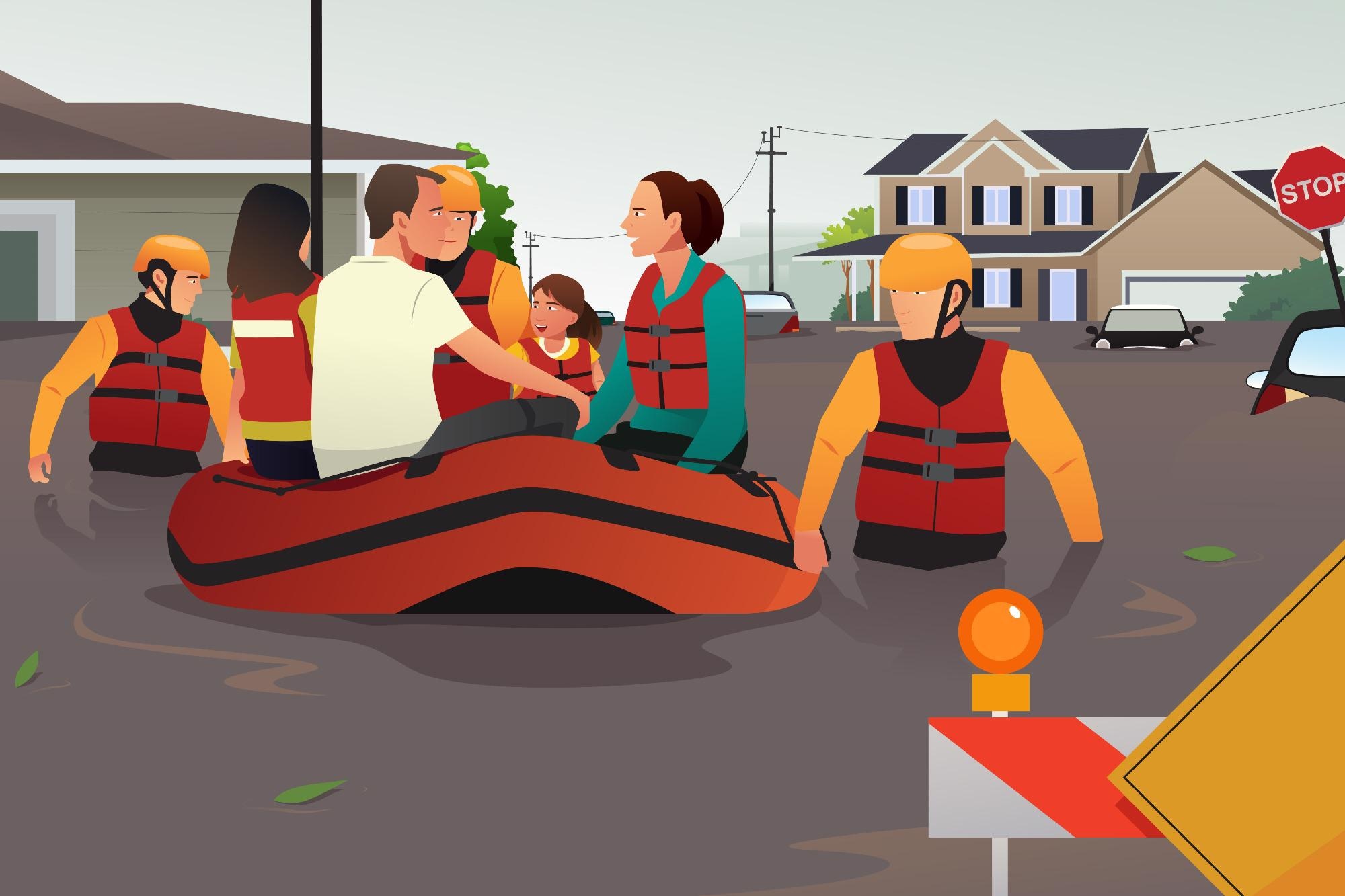Internet of Things (IoT) technologies are opening the door to a future of intuitive and accurate systems that rely on sophisticated data analytics to prevent and mitigate the impact of natural disasters. While in its infancy, the sensor-based technology is likely to be life-saving.

Image Credit: Artisticco/Shutterstock.com
Natural Disasters Contribute to Human Suffering
The World Health Organization (WHO) describes a disaster as “any event that causes disruption to the environment, loss of human life, and loss of health services”. The occurrence of such events requires significant intervention from the local community as well as global resources.
Natural disasters impact a considerable proportion of the global population. Between 1994 and 2013, 217 million people were impacted by natural disasters. $15.3 billion in damages were caused between 2000 and 2017, and one million cases of cancer were attributed to natural disasters during this period.
Millions are forced to flee their homes each year because of these disasters, with recent figures revealing that 65 million people became immigrants and refugees in 2016 due to natural disasters. In the same year, the United Nations (UN) held its first-ever global conference on disaster relief, during which it stated that “today human suffering is greater than ever before time since the Second World War.”
Clearly, natural disasters are a major cause of human suffering, leading to death, injury, disease, homelessness, and contribute to poor education, unemployment, violence to women, child abuse, and child neglect. It is vitally important that disasters are prevented to reduce this significant level of human suffering.
Current strategies to mitigate natural disasters fit into the four categories of preparedness. The first is pre-disaster practices, including preparedness plans, emergency training, and alert systems. The second is response, such as crisis operations such as public alert devices, emergency isolation, and search and rescue operations.
After this is rescue recovery, involving disaster-based practices including providing transitional shelter, long-term medical treatment, and therapy, and finally, mitigation, including disaster-effective activities such as building code and zoning and public education.
While these strategies can help mitigate the effect of natural disasters, the sector has been slow to adopt emerging technologies to enhance their efficacy. In recent years, however, this has begun to change.
The Role of IoT in Disaster Prevention
IoT is a digital ecosystem of internet-connected devices. Scientists have begun realizing the potential of leveraging this connectivity in several applications across industries.
One major breakthrough in this field is the use of connected sensors in collecting data in real-time, relaying it to software with uniquely designed algorithms to analyze it automatically and evoking specific actions via interpretation of the results by artificial intelligence (AI).
For example, the agricultural industry has been one of the first sectors to seize the technology, ushering in Agriculture 4.0, where sensors optimize farming processes by automatically adjusting temperature and moisture requirements (and other factors) to suit the crop enhancing growth and reducing waste.
Now, scientists are leveraging the IoT into applications that can effectively prevent natural disasters.
Recently, scientists have been utilizing sensors to gather vast amounts of seismic data and analyzing it with AI to assess the magnitude and patterns of earthquakes. This data is helping to more accurately predict when earthquakes will happen; for example, a team of researchers from Google and Harvard is currently building a system that uses AI to predict the aftershocks of earthquakes.
So far, the scientists have collected data from over 131,000 earthquakes and aftershocks to develop their neural network which has been tested on a further 30,000 earthquake events. The accuracy of the IoT-based system is significantly higher than that of traditional prediction methods.
Sensors are also being used to serve as early warning systems for floods. Already, Google is building a platform that uses data collected from rainfall sensors alongside flood simulation software to predict floods with higher degrees of accuracy than traditional systems can achieve.
Volcanic eruptions are notoriously difficult to predict and cause a great amount of human suffering when they do. AI and the IoT will likely improve these predictions in the future, as work is currently underway to analyze the shape of ash particles to determine volcano types and better predict eruptions using this information.
Finally, NASA and Development Seed demonstrated how data from satellite images could be combined with machine learning to mitigate the impact of hurricanes, tracking Hurricane Harvey with an accuracy six times better than that of traditional techniques.
Can IoT Reach its Full Potential in Disaster Prevention
While there is much development in the use of the IoT in disaster prevention, it still faces limitations that must be addressed before it can reach its full potential. For example, one major issue lies in the possibility that data entering the AI system may be inaccurate.
To enable IoT to flourish in this field and be developed into life-saving applications, researchers must focus on solving current issues with AI. They can do this by hiring experienced researchers with expertise in AI, ensuring technology (sensors) are capable of collecting high-quality data, and hiring professionals who can create successful adoption strategies.
Continue reading: Mitigating Natural Disaster Damage with AETHER's Satellite Weather Sensors.
References and Further Reading
Sharma, K., Anand, D., Sabharwal, M., Tiwari, P., Cheikhrouhou, O. and Frikha, T., (2021) A Disaster Management Framework Using Internet of Things-Based Interconnected Devices. Mathematical Problems in Engineering, 2021, pp.1-21. Available at: https://www.hindawi.com/journals/mpe/2021/9916440/
Sinha, A., Kumar, P., Rana, N., Islam, R. and Dwivedi, Y., (2017) Impact of internet of things (IoT) in disaster management: a task-technology fit perspective. Annals of Operations Research, 283(1-2), pp.759-794. Available at: https://doi.org/10.1007/s10479-017-2658-1
Joshi, N., (2019) How AI Can And Will Predict Disasters. [Online]. Forbes. Available at: https://www.forbes.com/sites/cognitiveworld/2019/03/15/how-ai-can-and-will-predict-disasters/?sh=2cfa4eea5be2
Disclaimer: The views expressed here are those of the author expressed in their private capacity and do not necessarily represent the views of AZoM.com Limited T/A AZoNetwork the owner and operator of this website. This disclaimer forms part of the Terms and conditions of use of this website.